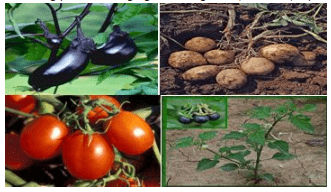Test: Biodiversity & Conservation - 3 - Grade 12 MCQ
25 Questions MCQ Test - Test: Biodiversity & Conservation - 3
Previously how much of the Earth’s land surface was covered by the tropical rain forests?
Following plants belonging to same genus (Solanum) represent:

Out of the following which one will not represent an alternative way to categories ecosystem diversity:
Currently, how much area of the Earth’s land surface is covered by the tropical rain forests?
What are the excess and the unsustainable use of resources called?
If snakes become extinct :
i). The loss will make the bionetwork imbalanced
ii). Their gene pool will be lost forever
iii). Result will be loss of biodiversity
Assertion: The pattern of species diversity on earth is not uniformly distributed.
Reason: Species variation is generally highest in the tropics and decreases towards the poles.
What happens when alien species are introduced unintentionally or deliberately?
The legal conversion of land into the status of royal forest refers to:
Which of the following is a major cause of reduction in gene pool?
Which of the following contains chemicals like parthenin, is toxic to cattle and cause pollen allergy in humans?
The evil quartet described by Jared Diamond doesn’t include :
Which of the following species had been not recently extinct?
Which of the following group of animals are more venerable to extinction?
Loss of biodiversity in a region may leads to
a. Decline in plant production
b. Lowered resistance to environmental perturbations such as drought.
c. Decreased variability in the ecosystem.
Why was the African catfish Clarias gariepinus introduced?
Wild animals :
i) Frequently breed in Zoos.
ii) Reproductive capacity is lowered if area of free movement is reduced.
If a species experiences a 90 percent decline over 10 years (or three generations), would be classified as :
Which phenomenon explains that ‘When a species becomes extinct, the plant and animal species also become extinct that are obligatorily associated with the host species’?
To qualify as a biodiversity hotspot , as per Myers hotspot map:
a) it must contain at least 0.5% or 1,500 species of vascular plants as endemics.
b) it has to have lost at least 70% of its primary vegetation.
Which of the following activities are generally permitted in the buffer zone of a biosphere reserve?














